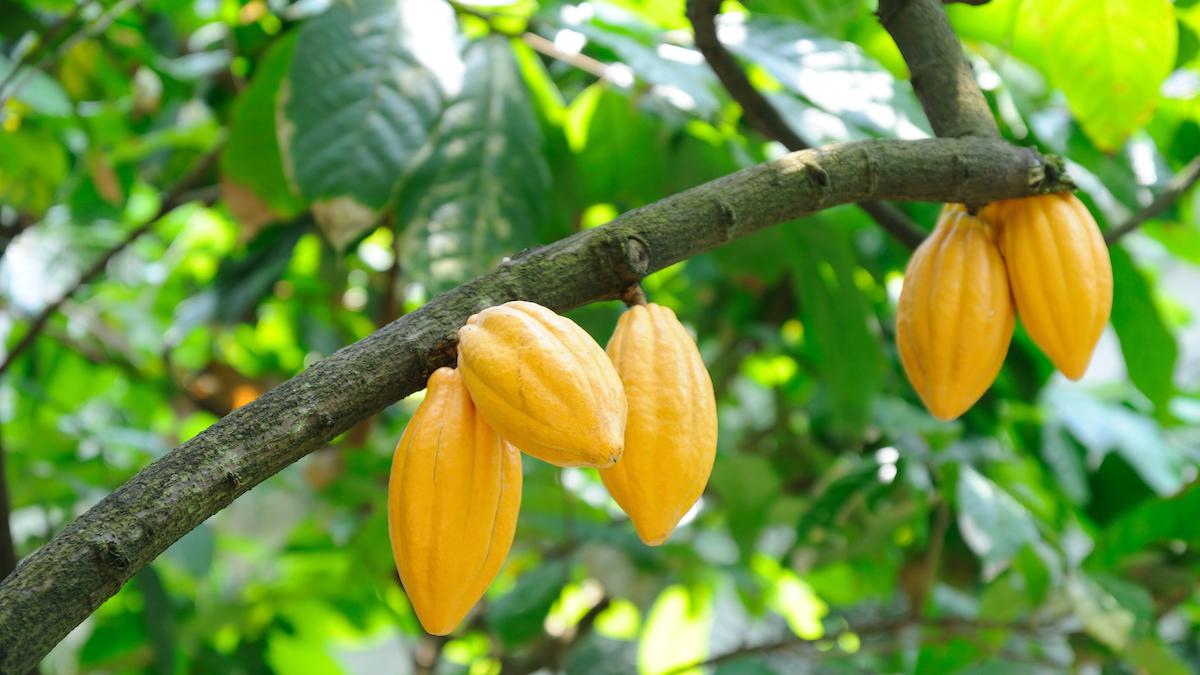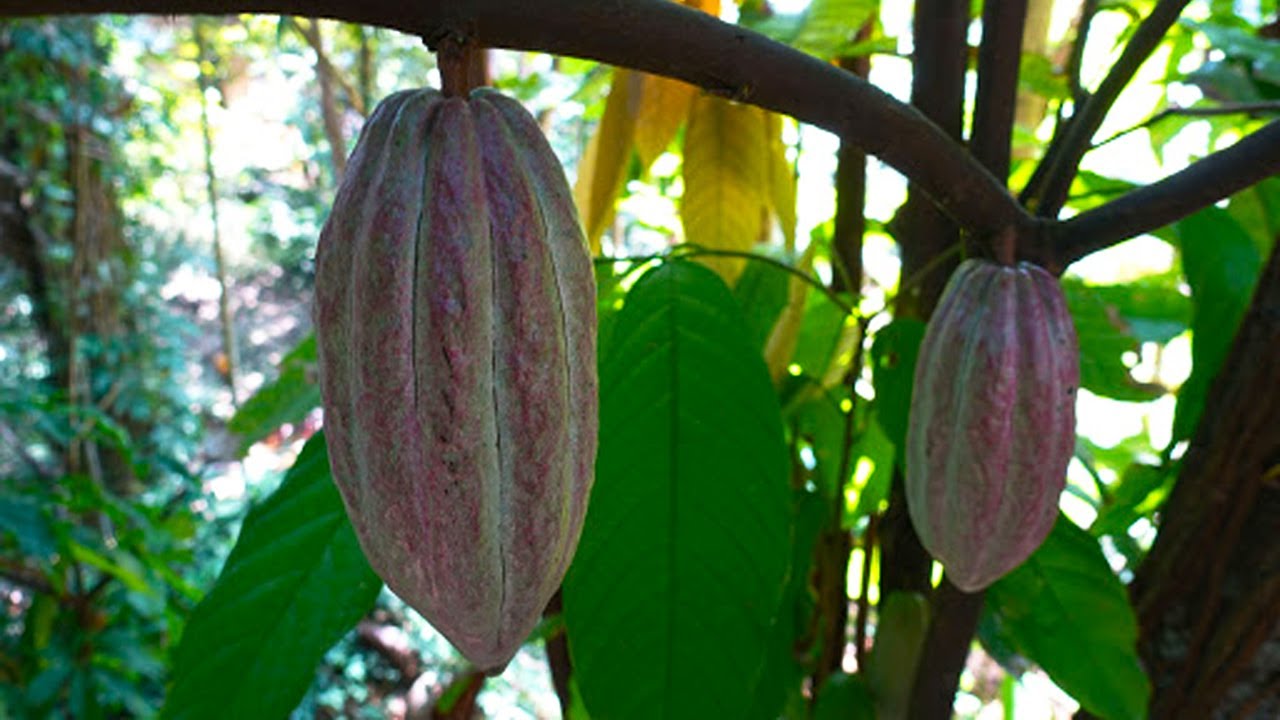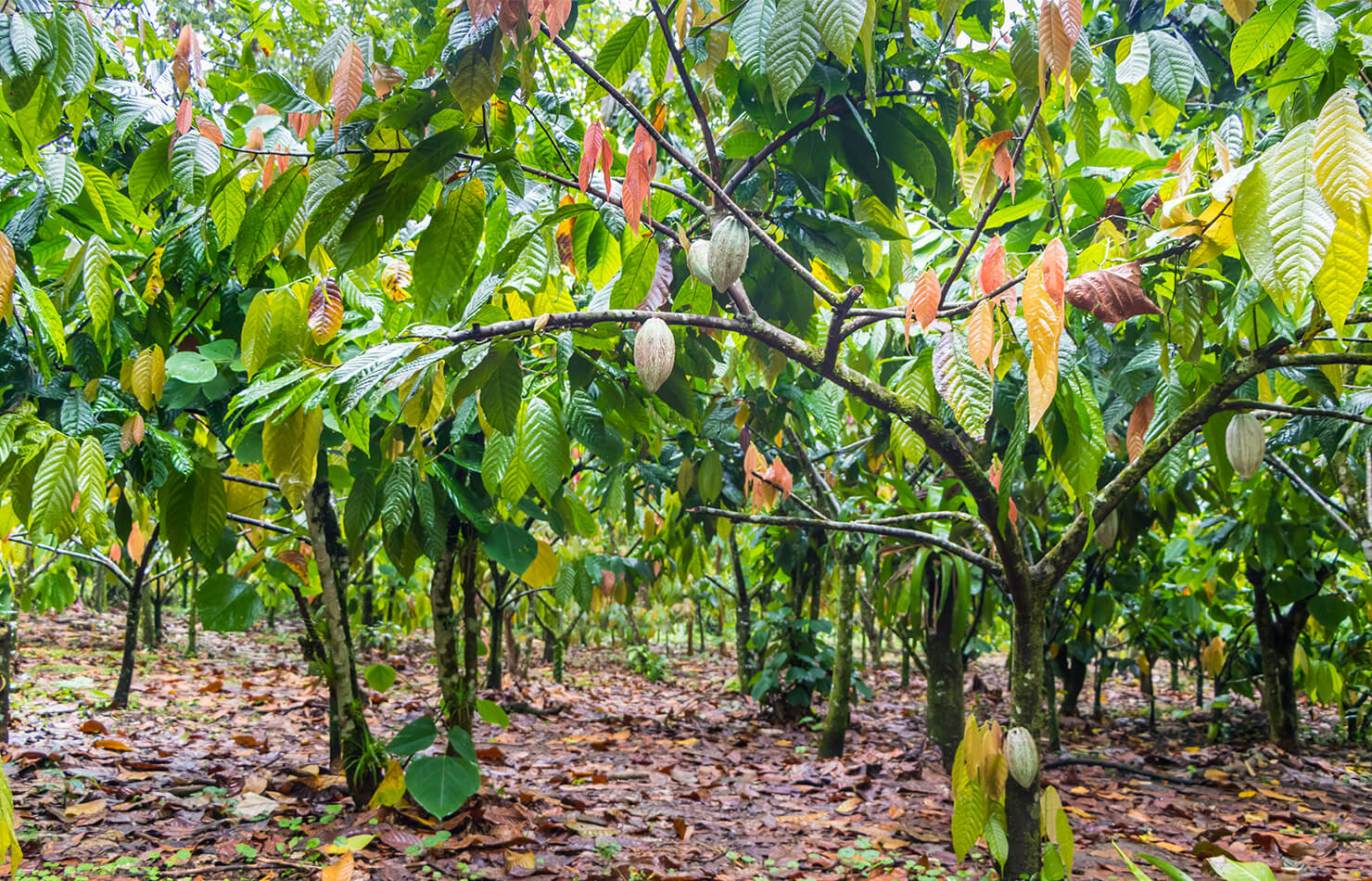Verticillium Wilt Of Cacao - Effects Of Its Integrated Management
The vascular condition, the soil borne fungus verticillium dahliae, is responsible for the verticillium wilt of cacao (Theobroma cacao), which is frequently categorized as a minor disease. Locally, it can yet result in significant losses, as in western Uganda and the northeast of the Democratic Republic of Congo, for instance.
Author:Suleman ShahReviewer:Han JuJul 21, 2022185 Shares2.4K Views

The vascular condition, the soil borne fungus verticillium dahliae, is responsible for the verticillium wilt of cacao(Theobroma cacao), which is frequently categorized as a minor disease.
Locally, it can yet result in significant losses, as in western Uganda and the northeast of the Democratic Republic of Congo, for instance.
Because of its wide range of hosts and protracted persistence in the soil, this disease is particularly challenging to treat.
As a result, verticillium wilt must be managed by an integrated approach similar to that used for other tree crops like olive.
However, there isn't much research that specifically addresses how to treat this condition in cacao. An overview of our understanding of verticillium wilt on cacao and integrated disease management techniques for avoiding and controlling it are provided in this article.
Additionally, promising directions based on discoveries in other crops that might be applied to cocoa are investigated.
The use of organic amendments with or without biocontrol agents, genetic resistance, biological control, induced resistance, and good agricultural practices are all mentioned.
Additionally, the potential advantages of some of these remedies are discussed in relation to the enhancement of nutrition, abiotic stress, and resistance to various cocoa diseases.
Verticillium Wilt Of Cacao
The cacao tree (Theobroma cacao) is a tropical South American understory tree. It yields fruits (pods) used in confectionery, especially chocolate. Cacao farming expanded from 4.4 million hectares in the 1960s to 11.8 million hectares in 2018, generating 5 million tons of cocoa beans. 5.5 million smallholder cacao farmers and 14 million rural laborers depend on cocoa production. The West African cacao belt (from Ivory Coast to Cameroon) produces almost 70% of the world's cocoa.
Diseases cause production losses. Black pod, witches' broom, frosty pod, vascular streak dieback, and cacao swollen shoot virus cause annual losses of 1.3 million tons of cacao beans, or 20% of hypothetical production. Verticillium wilt (VW) in western Uganda and northeast of the Democratic Republic of Congo affects chocolate locally.
Verticillium dahliae Kleb causes verticillium wilt on cocoa. Verticillium is an ascomycete fungus with verticillate conidiophores that produce asexual conidia.

Cacao tree (Theobroma cacao)
Host Range And Geographical Distribution
Verticillium dahliae infects nearly 400 dicotyledonous plants globally, including several commercially important crops. Weeds are asymptomatic verticillium dahliae reservoirs. Verticillium dahliae can remain latent in the soil for years in small, melanized resting structures that only germinate near a suitable host.
Verticillium dahliae was first identified as a cacao pathogen in Uganda, where it causes "sudden death sickness" known from 1915. Verticillium wilt is the major disease impacting cocoa in Uganda, causing up to 30% tree losses on certain farms and limiting production. Verticillium wilt was found in Ugandan cotton (Gossypium hirsutum L.).
Following this study, verticillium wilt on cocoa was recorded in Brazil, where it's a significant problem in Bahia and Esprito Santo. In certain locations, it caused 10% yearly plant mortality. Colombia and Peru have also detected verticillium dahliae on cacao. In Ecuador, a pathogen causing cocoa wilt was identified as a verticillium genus but not species.
Symptoms And Diversity
Verticillium wilt symptoms vary by host; there are no universal signs. Chlorosis, vein clearing, wilting, stunting, and necrosis are disease signs. Stem tissue sections show brown vascular discolouration. Verticillium dahliae causes yield and quality losses through root infection. When verticillium dahliae enters cacao's xylem, the tree creates defensive barriers that limit transpiration, causing discolouration, abrupt withering of leaves, necrosis of leaves and fine branches, and stunting or death of the plant.
Symptoms of verticillium dahliae infection develop when the cocoa tree bears pods. However, the fungus likely affected the tree prior. Severe attacks can kill a cacao tree one week after it appears healthy and thriving. Infected cocoa, peach (Prunus persica), almond, apricot, avocado, olive, pistachio, and ash trees have recovered naturally.
Genotype may affect species recovery and only resistant cacao varieties recover. In olive, resistant and moderately resistant genotypes recover three times more often than susceptible plants. Flood et al. provide details on verticillium wilt in cocoa.
Verticillium Dahliae Detection
Verticillium dahliae can be isolated from plant roots, stems, branches, twigs, leaves, and seeds. Fungus is typically isolated from excised vascular tissue using NP-10 semi-selective media. Although serological tests have been established to verify planting materials, molecular diagnostic techniques are used to detect and identify Verticillium species, e.g. in olive.
These molecular diagnostic approaches can identify extremely low inoculum levels. Verticillium dahliae can damage crops at low inoculum concentrations, e.g., 2 CFU/g of soil for strawberry and cotton. They can also detect verticillium dahliae in cacao-growing soil, averting future issues.
These molecular techniques, notably real-time quantitative PCR, nested PCR, loop-mediated isothermal amplification (LAMP), or recombinase polymerase amplification combined with lateral-flow dipstick technology, are preferable to plating but may present problems in countries with limited resources and inadequate research infrastructure, as in many cocoa-producing countries. Plating approaches remain interesting in these instances.
Current Control Of Verticillium Wilt In Cacao
Verticillium wilt is difficult and expensive to control in cocoa, and it has no cure. Systemic fungicides, such as benzimidazoles, can control Verticillium wilt in annual crops like strawberry, but not in tree crops like cocoa and olive.
Fungicides benomyl and azoxystrobin reduced verticillium wilt in avocado crops, although they were less successful than cultural practices. Economic and environmental considerations weren't considered, nor was the fact that benomyl is illegal in several nations.
Verticillium wilt control in cacao is underrated. Biological, chemical, physical, and cultural control techniques are needed to reduce verticillium wilt losses and prevent its spread to new planting areas. In the field, an integrated approach proved most effective for managing avocado Verticillium wilt.
A two-year field trial using pruning, solarization, drainage, Trichoderma sp. and mycorrhiza, sucrose, organic matter, and mineral replenishment reduced disease by 80.3%. Solarization reduced illness by 35.7% and fungicide by 62.3%.

Identifying and Preventing Verticillium Wilt
Management Of Verticillium Wilt In Cacao
Cultural Control Of Verticillium Wilt
Good agricultural control techniques are the foundation of any cacao pest and disease management approach. This applies to verticillium wilt, hence strategies to limit its occurrence, severity, and spread are needed.
When planting new cacao, seedlings and potting soil should be disease and pathogen-free.
In contaminated locations, avoid planting. Replanting in verticillium wilt-affected regions should be avoided unless the site has been fallow for a long time. Verticillium dahliae can survive 14 years in non-host crops, therefore this isn't a practical alternative. Before planting, check soils for verticillium dahliae.
Solarization may minimize soil borne fungal inoculum in established orchards. This method requires two considerations. First, infections can occur below the solarization depth. Second, shady regions have cooler soil, restricting pathogen elimination.
Dead trees must be uprooted and burned to prevent inoculation. Infected plants and contaminated soils should be disinfected. When planting, avoid wounding cacao seedlings' roots, as verticillium can enter.
When weeding, avoid harming cacao trees. In cacao-growing areas, weed management is vital because certain weeds might harbor verticillium dahliae. Eight common Brazilian weeds host verticillium dahliae.
Genetic Resistance/Tolerance Of Cacao To Verticillium Wilt
The greatest method for permanently eradicating verticillium wilt of cocoa is to select for disease resistance in breeding programs. Many crops have verticillium wilt resistance/tolerance.
Tomato, potato, lettuce, and sea-island cotton have verticillium wilt resistant genes. Arabidopsis thaliana has a dominant gene for verticillium dahliae resistance. In cacao, resistant segregation in seedlings from five crossings revealed monogenic heritability, with susceptibility dominant. Hop and olive have polygenic resistance control.
Resistant/tolerant genotypes include olive, strawberry, lettuce, tomato, sunflower (Helianthus annuus), and cotton. Verticillium virulence affects resistance. Most commercial olive cultivars aren't resistant to a defoliating verticillium dahliae pathotype after 15 years of work on genetic resistance/tolerance.
Biological Control Of Verticillium Wilt Of Cacao
Using antagonistic organisms (Biological Control agents, BCA) to reduce or suppress pathogen activity has various benefits in plant disease management. It's organic, sustainable, and durable, but non-target impacts must be controlled.
Microorganisms in non-symptomatic plants or suppressive soils or composts can be used to select BCAs for verticillium dahliae suppression. Biocontrol agents must be screened in the field to increase their success. Microsclerotia are a prominent source of verticillium dahliae inoculum and play an important role in the disease cycle.
BCAs against verticillium dahliae should impair microsclerotia survival or germination. BCA should be able to colonize the xylem and/or cortex and compete with the pathogen for nutrition and/or space as the disease affects the xylem. BCA can enhance plant growth and create plant resistance. The BCAs must swiftly colonize the host and adapt to harsh (a)biotic circumstances following release.
Biocontrol agents for Verticillium wilt management have been studied. Pseudomonas spp. and Bacillus spp. are prevalent verticillium wilt BCAs. Several researchers have examined arbuscular mycorrhizal fungi's ability to control Verticillium wilt. Trichoderma and non-pathogenic xylem-colonizing Fusarium and Verticillium BCA against verticillium wilt are particularly studied.
Induced Resistance For Verticillium Wilt Management In Cacao
Several experiments have examined priming cocoa plants to withstand verticillium wilt. Ribeiro et al. evaluated potassium phosphite's effect on cocoa seedling verticillium dahliae resistance. Potassium phosphite inhibited verticillium dahliae conidia germination, but had no effect on cacao seedlings. In potatoes, phosphites reduce verticillium spp. growth in vitro and in vivo, but at high concentrations.
Resende et al. used an S-methyl ester of benzo-(1,2,3)-thiadiazole-7 carbothioic acid (acibenzolar-S-methyl, ASM), a compound in the benzothiadiazole group and an analog of salicylic acid, to induce resistance against verticillium dahliae and moniliophthora perniciosa, the cause of cacao witches' broom disease. Spraying ASM 15 days before verticillium dahliae inoculation reduced disease severity by 55.4% relative to the control.
ASM reduced witches' broom disease seedlings by 33.5% to 84.5%. Cavalcanti et al. compared moniliophthora perniciosa-based suspension to ASM for verticillium dahliae resistance in cocoa. ASM gave cocoa plants the best protection against verticillium dahliae (30.2% vs. water-pretreated controls), although chitosan from moniliophthora perniciosa mycelium gave 24.3% protection (80% of the ASM performance). Sandroni et al. discuss ASM's preventative effect on plant diseases. ASM cannot be certified organic.
Organic Modifications For The Control Of Verticillium Wilt In Cacao
Compost can reduce pathogenic fungi like verticillium dahliae. Verticillium dahliae is among the most responsive fungus to suppressive composts, according to an analysis of 250 publications. In 72% of the 84 tests on verticillium disease, organic amendments were suppressive, 21% had no impact, and 7% increased disease incidence. In tomato, eggplant, pepper, cotton, and strawberry, composts suppressed verticillium dahliae.
For perennial crops, grape marc composts reduced verticillium dahliae inoculum density up to 30 cm deep in olive orchards and disease incidence in 1-year-old and 30-year-old trees as well as 5-month-old rooted olive cuttings from a highly susceptible variety. Organic matter (bovine manure and plant and mushroom residues) and a mineral amendment to 7-year-old avocado reduced disease severity by 50% and verticillium dahliae inoculum levels in soils and leaves by 53%.
The possibility of organic amendments for verticillium wilt control in cocoa has not yet been studied. Developing verticillium dahliae control amendments could give value to agricultural waste and diversify income streams. Use non-contaminated resources (plants and manure) to manufacture compost or eliminate possible pathogens during composting.
People Also Ask
How Long Does Verticillium Wilt Last In Soil?
The fungus lives in the soil as a mycelium, a thread-like body, and microsclerotia, which are tiny, black, resilient structures. These microsclerotia can last up to ten years in decaying plant matter or soil.
Can A Tree Recover From Verticillium Wilt?
A small tree may succumb to verticillium wilt in a single season, but larger trees may take several years to pass away or may fully recover.
What Causes Verticillium Wilt?
Verticillium dahliae and verticillium albo-atrum are the two fungi that primarily cause verticillium wilt. These fungi are typically found in the roots, branches, and leaves of diseased plants as well as in Wisconsin soils.
How Is Verticillium Wilt Disease Treated?
For the prevention and treatment of verticillium wilt, fungicides are not an option. To increase the lifespan and aesthetic value of an infected tree, however, further steps may be performed. Pruning, fertilizing, and watering procedures must be followed in order to manage this disease.
Conclusion
Verticillium wilt in cacao is underappreciated. This disease affects cocoa growers' yields and livelihoods in Uganda, DR Congo, Brazil, and Peru. This soil borne illness is hard to control. Unfortunately, cocoa management research is limited.
Avoid planting in polluted regions; test for verticillium dahliae before planting. Using disease-free materials and avoiding tree wounds are also recommended. To avoid or diminish verticillium dahliae incidence and severity, good agricultural methods such as shade, weed management, and cacao nutrition are essential. In case of verticillium dahliae attacks, sanitary measures must be taken, such as cutting and burning dead trees and disinfecting maintenance instruments.

Suleman Shah
Author
Suleman Shah is a researcher and freelance writer. As a researcher, he has worked with MNS University of Agriculture, Multan (Pakistan) and Texas A & M University (USA). He regularly writes science articles and blogs for science news website immersse.com and open access publishers OA Publishing London and Scientific Times. He loves to keep himself updated on scientific developments and convert these developments into everyday language to update the readers about the developments in the scientific era. His primary research focus is Plant sciences, and he contributed to this field by publishing his research in scientific journals and presenting his work at many Conferences.
Shah graduated from the University of Agriculture Faisalabad (Pakistan) and started his professional carrier with Jaffer Agro Services and later with the Agriculture Department of the Government of Pakistan. His research interest compelled and attracted him to proceed with his carrier in Plant sciences research. So, he started his Ph.D. in Soil Science at MNS University of Agriculture Multan (Pakistan). Later, he started working as a visiting scholar with Texas A&M University (USA).
Shah’s experience with big Open Excess publishers like Springers, Frontiers, MDPI, etc., testified to his belief in Open Access as a barrier-removing mechanism between researchers and the readers of their research. Shah believes that Open Access is revolutionizing the publication process and benefitting research in all fields.

Han Ju
Reviewer
Hello! I'm Han Ju, the heart behind World Wide Journals. My life is a unique tapestry woven from the threads of news, spirituality, and science, enriched by melodies from my guitar. Raised amidst tales of the ancient and the arcane, I developed a keen eye for the stories that truly matter. Through my work, I seek to bridge the seen with the unseen, marrying the rigor of science with the depth of spirituality.
Each article at World Wide Journals is a piece of this ongoing quest, blending analysis with personal reflection. Whether exploring quantum frontiers or strumming chords under the stars, my aim is to inspire and provoke thought, inviting you into a world where every discovery is a note in the grand symphony of existence.
Welcome aboard this journey of insight and exploration, where curiosity leads and music guides.
Latest Articles
Popular Articles
